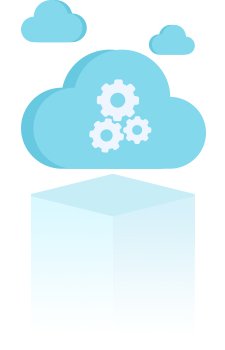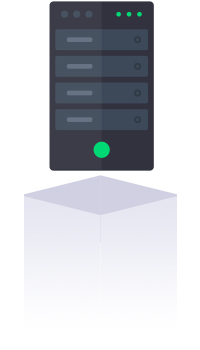We assume that, since you are considering the types of PIM, you already know very well what it is and how it works. Also, you probably understand that a PIM system will solve your problems only in case you use it efficiently, in accordance with the objectives, and deploy it correctly. All the employee of your company should be taught to work with the system you choose.
Cloud-based PIM-systems

Everything is moving to the cloud, and Product Information Management is no exception. Over the past ten years, cloud-based software captured the market. When all your data is stored on the vendor side, it provides considerable benefits but also some important concerns.
Cloud-based solutions are known for greater flexibility, scalability, and mobility. Also, the lower entry cost is very appealing. To many companies, especially, middle-sized and small businesses, predictable monthly or annual payments sound much better than investing in infrastructure and staff. You don't have to buy hardware and software and hire operational figures. Apart from that, with automatic updates and don't care about your equipment and programs aging. Essentially, you just find the right provider and have everything done for you. The deployment takes less time.
Now it is obvious why the cloud is so popular. However, it is still considered less secure despite persistent efforts to solve this problem. Also, ready-made, out-of-the-box solutions can never satisfy all your company needs in full. Even when customization is possible, you will have to turn to your vendor for these modifications.
Some popular cloud-based PIM systems are Plytix, EssentialPIM, Salsify, and Akeneo Cloud Edition.
Advantages of cloud-based PIMs
- Low initial investments: pay-as-you-go model, predictable expenses over time.
- Faster deployment: сloud-based solutions take considerably less time to deploy and start using.
- Scalability: when your business faces increased demands you can easily scale. If the demand is reduced you move back to your original configuration, so you pay for what you use only.
- Easy mobile accessibility: this feature is typical for many cloud-based PIMs.
Disadvantages of cloud-based PIMs
- Data security is ensured by the vendor: storing sensitive data is a risk factor, especially if the servers are shared with other customers. It makes it easier to hack, even if the data is encrypted.
- Less customization: fast deployment of cloud-based PIM often means it will be an out-of-the-box solution that only partially fits your company. And your in-house IT team most likely will not be able to do anything about it.
- Debatable cost-efficiency in the long run: the total cost of ownership may end up at the same rate or even higher than that of an on-premise in 10 years.
So, the cloud is good but it is surely not a panacea.
On-premise PIM systems

On-premise models are usually chosen for stronger security since you maintain all the data on your own servers, behind your firewall. However, it is important to ensure that either the vendor or your in-house security experts can manage the high level of security. While on-premise PIM solutions might involve a longer implementation period, they also offer full control and personalization to satisfy all your business needs.
You can prioritize certain departments and arrange employee training as you find necessary. On-premise PIM systems are generally priced under a one-time license fee. So you have to invest more at the beginning but usually, the further operational costs are less (only updates, support, and training).
As for the available on-premise options, there are two main types of software: open-source and closed-source. It's important to understand the difference before settling on a particular PIM provider.
Advantages of on-premise PIMs
- Data security is in your hands: you can do whatever is necessary to protect your sensitive data.
- You can customize the PIM system and have more abilities to shape it to your needs, especially if it is open-source.
- You control the implementation process for your on-premise solution.
Disadvantages on-premise PIMs
- Upfront investments are bigger and riskier.
- Customization can increase deployment time and cause inconveniences when the software is updated.
- You are responsible for maintaining and updating the on-premise system.
Cloud-based vs On-Premise
To sum up all of the advantages and disadvantages, here is a quick comparison table of both types of PIM systems.
|
Feature |
Cloud-Based |
On-Premise |
|
Initial Investments |
Low initial investments, pay-as-you-go model. |
Upfront investments are bigger and riskier. |
|
Deployment Time |
Faster deployment. Cloud-based solutions take less time. |
Deployment time can be longer, especially with customization. |
|
Scalability |
Easily scalable based on business demands. |
Scalability is possible but may involve additional investments. |
|
Mobile Accessibility |
Easy mobile accessibility is a standard feature. |
Accessibility depends on the organization's infrastructure. |
|
Data Security |
Data security is ensured by the vendor, posing potential risks. |
Data security is in your hands, providing more control. |
|
Customization |
Less customization, often an out-of-the-box solution. |
High customization, especially if it is an open-source. |
|
Total Cost of Ownership |
Predictable expenses, but long-term cost-efficiency is debatable. |
Upfront costs may be higher, but long-term costs are more predictable. |
|
Implementation Control |
Limited control over the implementation process. |
Full control over the implementation process. |
|
Maintenance and Updates |
Vendor is responsible for maintenance and updates. |
The organization is responsible for maintenance and updates. |
|
Risk Factors |
Potential risk of shared servers and easier hacking. |
Risk is mitigated as sensitive data is under organizational control. |
|
Long-Term Flexibility |
May be limited in long-term flexibility due to less customization. |
Offers more long-term flexibility through extensive customization. |
Overall, cloud-based PIMs provide cost-effective scalability and quick deployment while on-premise – offer heightened security and extensive customization, and full control. The choice depends on factors such as budget, customization needs, and desired control, prompting businesses to carefully assess their priorities for an informed decision.
There are also web-based software solutions that offer equal functionality whether deployed on-premise or in the cloud. An example of that is AtroPIM software where users experience no functional differences between the two deployment options, and the software operates from a single base version with variations in modules rather than distinct Community or Enterprise Editions. This underscores the flexibility and uniformity of AtroPIM across different deployment environments.
Open Source systems
Just in case, "open source" does not automatically mean "free". Open source software means its license allows users access to the source code. They can inspect, modify, and enhance it. With open-source PIM, your in-house development team can personalize it, and add new features and integrations. For example, you can connect certain eCommerce platforms, ERPs, that are not on your vendor's list. You can fix problems (though, it also means, often you need to fix it and cannot just go to the provider and make them immediately have everything done).
Also, open-source software usually has a big community in addition to standard technical support. In general, the world is moving towards open-source philosophy though not so obviously and fast as to the cloud. Examples of open-source PIM companies are Akeneo, AtroPIM, and PimCore.
Proprietary systems
Proprietary, or "closed-source" companies typically offer an "out-of-the-box" solution. If you ever need some additional features, you will need to wait till your provider develops it, if it is going to. On the other hand, you may find the original functionality sufficient.
Speaking of third-party interoperability, most likely, you'll be able to find a vendor who provides connectors for the platforms, systems, and tools you need unless you use something very unusual. One big advantage of proprietary PIM is that you don't need a sophisticated IT-team, you don't have to choose among options to customize your software. In general, it is easier to use.
Match the technology to your business needs
PIMs are often called "the single source of truth". Yet there is no single recipe for the best solution. To decide on what type is better for your company, you should understand your objectives, and analyze your company plans for the future and current abilities. Remember that the effectiveness of the PIM system for your organization depends on your decision.



